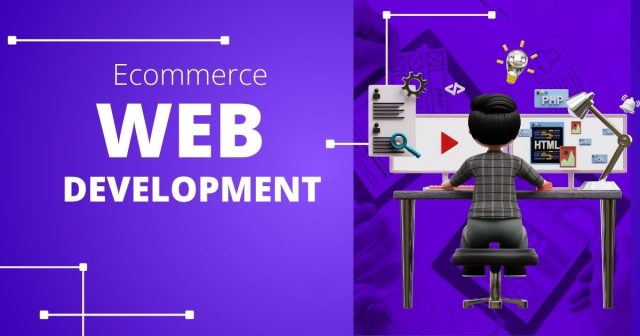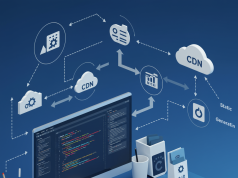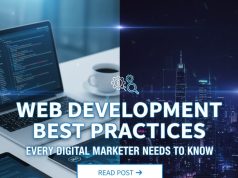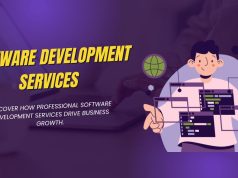Building an e-commerce website requires more than just setting up a digital storefront. The difference between a successful online business and one that struggles to gain traction often comes down to thoughtful web development choices made during the planning and construction phases.
Modern consumers expect seamless shopping experiences, lightning-fast load times, and intuitive navigation. When these expectations aren’t met, potential customers quickly move on to competitors. This comprehensive guide explores the essential elements of e-commerce web development and how strategic development decisions directly impact your marketing efforts and bottom line.
Whether you’re launching your first online store or rebuilding an existing platform, understanding these fundamentals will help you create a website that not only looks professional but also converts visitors into loyal customers.
Core Components of E-commerce Web Development

Platform Selection: The Foundation of Your Online Store
Choosing the right e-commerce platform forms the backbone of your entire web development project. Popular options include Shopify, WooCommerce, Magento, and custom-built solutions, each offering distinct advantages depending on your business needs.
Shopify provides an all-in-one solution with built-in hosting, payment processing, and extensive app integrations. This platform works particularly well for businesses that want to launch quickly without extensive technical knowledge. WooCommerce, built on WordPress, offers more customization flexibility and works best for businesses already familiar with WordPress or those requiring specific functionality.
Magento caters to larger enterprises with complex product catalogs and advanced feature requirements. Custom development provides maximum flexibility but requires significant time and budget investments.
User Experience Design That Converts
Effective e-commerce web development prioritizes user experience at every touchpoint. Your website’s design should guide visitors naturally from browsing to purchasing, removing friction wherever possible.
Navigation structure plays a crucial role in this process. Clear category organization, prominent search functionality, and intuitive menu layouts help customers find products quickly. Breadcrumb navigation ensures users always know their location within your site hierarchy.
Product pages require special attention during development. High-quality images with zoom functionality, detailed descriptions, customer reviews, and clear pricing information all contribute to conversion rates. The add-to-cart process should be seamless, with visual confirmation and easy access to the shopping cart.
Mobile-First Development Approach
Mobile commerce continues to grow exponentially, making responsive design non-negotiable for e-commerce success. Web development must prioritize mobile experiences from the initial planning stages rather than treating mobile as an afterthought.
Touch-friendly interfaces, optimized button sizes, and streamlined checkout processes become critical on smaller screens. Loading speeds matter even more on mobile devices, where users have less patience for slow-loading pages.
Consider implementing progressive web app (PWA) features to enhance mobile experiences. PWAs provide app-like functionality through web browsers, including offline capabilities and push notifications, without requiring app store downloads.
Technical Requirements for E-commerce Success
Security and Payment Processing
Security represents one of the most critical aspects of e-commerce web development. Customers need confidence that their personal and financial information remains protected throughout the purchasing process.
SSL certificates encrypt data transmission between browsers and servers, displaying the padlock icon that signals security to customers. Payment Card Industry (PCI) compliance ensures your payment processing meets industry security standards.
Implementing secure payment gateways like Stripe, PayPal, or Square provides customers with familiar, trusted payment options while handling security requirements behind the scenes. Multi-factor authentication for admin accounts adds another layer of protection against unauthorized access.
Site Speed and Performance Optimization
Page loading speed directly impacts both user experience and search engine rankings. E-commerce sites face unique challenges due to product images, complex functionality, and database queries that can slow performance.
Image optimization techniques, including compression and next-generation formats like WebP, significantly reduce loading times without sacrificing visual quality. Content delivery networks (CDNs) distribute your site’s content across multiple servers worldwide, ensuring faster loading regardless of visitor location.
Database optimization becomes increasingly important as product catalogs grow. Efficient queries, proper indexing, and caching strategies prevent slowdowns during peak traffic periods.
Search Engine Optimization Integration
SEO considerations must be built into the web development process from the beginning rather than added as an afterthought. Technical SEO elements like site structure, URL formatting, and schema markup lay the foundation for organic search visibility.
Clean, descriptive URLs that include relevant keywords help both search engines and users understand page content. Product pages should include structured data markup to enhance search result displays with rich snippets showing prices, availability, and review ratings.
Site architecture should support logical linking between related products and categories, helping search engines understand your site’s content relationships while providing users with relevant product suggestions.
E-commerce Marketing Integration

Analytics and Tracking Implementation
Successful e-commerce marketing depends on accurate data collection and analysis. Web development should include a comprehensive tracking setup from launch day to avoid data gaps that could impact future marketing decisions.
Google Analytics 4 provides detailed insights into user behavior, conversion paths, and revenue attribution. Enhanced ecommerce tracking reveals which products perform best, where customers drop off in the sales funnel, and which marketing channels drive the highest-value customers.
Heat mapping tools like Hotjar or Crazy Egg show exactly how visitors interact with your pages, revealing optimization opportunities that analytics data alone might miss. A/B testing capabilities allow you to validate design and functionality changes with real user data.
Email Marketing and Automation Setup
Email marketing integration should be built into your e-commerce platform during development rather than bolted on later. This ensures seamless data flow between your website and email marketing tools.
Abandoned cart recovery emails can recover 10-15% of lost sales when properly implemented. This requires your development team to track cart contents and trigger automated emails when customers leave without completing purchases.
Post-purchase email sequences, customer segmentation based on purchase history, and personalized product recommendations all depend on proper data integration between your e-commerce platform and marketing tools.
Conversion Rate Optimization Features
Web development decisions directly impact conversion rates, making CRO considerations essential during the planning phase. Features like guest checkout options, multiple payment methods, and clear shipping information all influence purchase decisions.
Trust signals such as security badges, customer testimonials, and money-back guarantees should be prominently displayed and properly implemented. Social proof elements like recent purchase notifications or customer review counts can boost conversion rates when thoughtfully integrated.
Exit-intent popups, while sometimes controversial, can effectively capture email addresses or offer last-minute incentives to hesitant buyers when used judiciously.
Common E-commerce Development Challenges and Solutions
Scalability Planning
Many e-commerce businesses outgrow their initial platforms as they expand product lines, increase traffic, or add new features. Planning for scalability during initial web development prevents costly migrations later.
This includes choosing hosting solutions that can handle traffic spikes during sales events, database structures that perform well with large product catalogs, and development frameworks that support future feature additions.
Cloud-based hosting solutions offer automatic scaling capabilities, adjusting resources based on traffic demands without manual intervention. This prevents site crashes during peak shopping periods while controlling costs during slower periods.
Inventory Management Integration
Seamless inventory management becomes crucial as ecommerce businesses grow beyond a handful of products. Your web development should include proper integration with inventory management systems to prevent overselling and maintain accurate stock levels.
Real-time inventory updates across multiple sales channels prevent customer frustration from ordering out-of-stock items. Automated low-stock notifications help maintain optimal inventory levels without constant manual monitoring.
Planning Your E-commerce Development Project
Starting an e-commerce web development project requires careful planning and clear goal-setting. Begin by defining your target audience, understanding their shopping preferences, and mapping out the complete customer journey from discovery to repeat purchase.
Budget allocation should account for ongoing maintenance, security updates, and feature enhancements beyond the initial build. E-commerce sites require more ongoing attention than simple brochure websites due to security requirements, payment processing updates, and evolving customer expectations.
Consider partnering with developers who specialize in e-commerce projects and understand the unique challenges of online retail. Their expertise in e-commerce marketing integration, security requirements, and performance optimization can prevent costly mistakes and missed opportunities.
Regular testing across different devices, browsers, and user scenarios ensures your site performs well for all customers. This includes testing the complete purchase process, payment methods, and customer service features before launch.
Success in e-commerce requires the perfect blend of solid web development and strategic marketing integration. When these elements work together seamlessly, they create an online shopping experience that not only meets customer expectations but exceeds them, driving both immediate sales and long-term customer loyalty.







